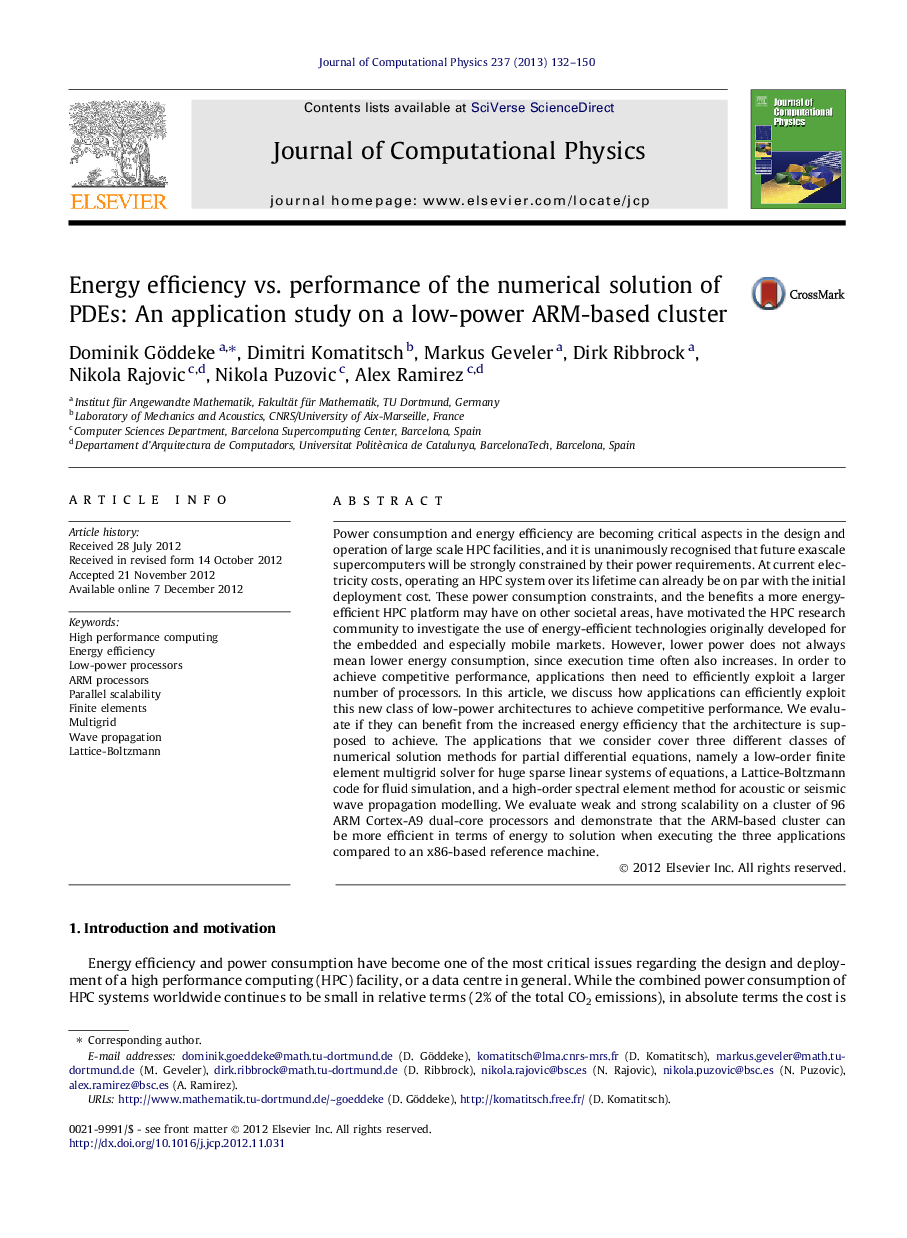| کد مقاله | کد نشریه | سال انتشار | مقاله انگلیسی | نسخه تمام متن |
|---|---|---|---|---|
| 521536 | 867773 | 2013 | 19 صفحه PDF | دانلود رایگان |

Power consumption and energy efficiency are becoming critical aspects in the design and operation of large scale HPC facilities, and it is unanimously recognised that future exascale supercomputers will be strongly constrained by their power requirements. At current electricity costs, operating an HPC system over its lifetime can already be on par with the initial deployment cost. These power consumption constraints, and the benefits a more energy-efficient HPC platform may have on other societal areas, have motivated the HPC research community to investigate the use of energy-efficient technologies originally developed for the embedded and especially mobile markets. However, lower power does not always mean lower energy consumption, since execution time often also increases. In order to achieve competitive performance, applications then need to efficiently exploit a larger number of processors. In this article, we discuss how applications can efficiently exploit this new class of low-power architectures to achieve competitive performance. We evaluate if they can benefit from the increased energy efficiency that the architecture is supposed to achieve. The applications that we consider cover three different classes of numerical solution methods for partial differential equations, namely a low-order finite element multigrid solver for huge sparse linear systems of equations, a Lattice-Boltzmann code for fluid simulation, and a high-order spectral element method for acoustic or seismic wave propagation modelling. We evaluate weak and strong scalability on a cluster of 96 ARM Cortex-A9 dual-core processors and demonstrate that the ARM-based cluster can be more efficient in terms of energy to solution when executing the three applications compared to an x86-based reference machine.
Journal: Journal of Computational Physics - Volume 237, 15 March 2013, Pages 132–150